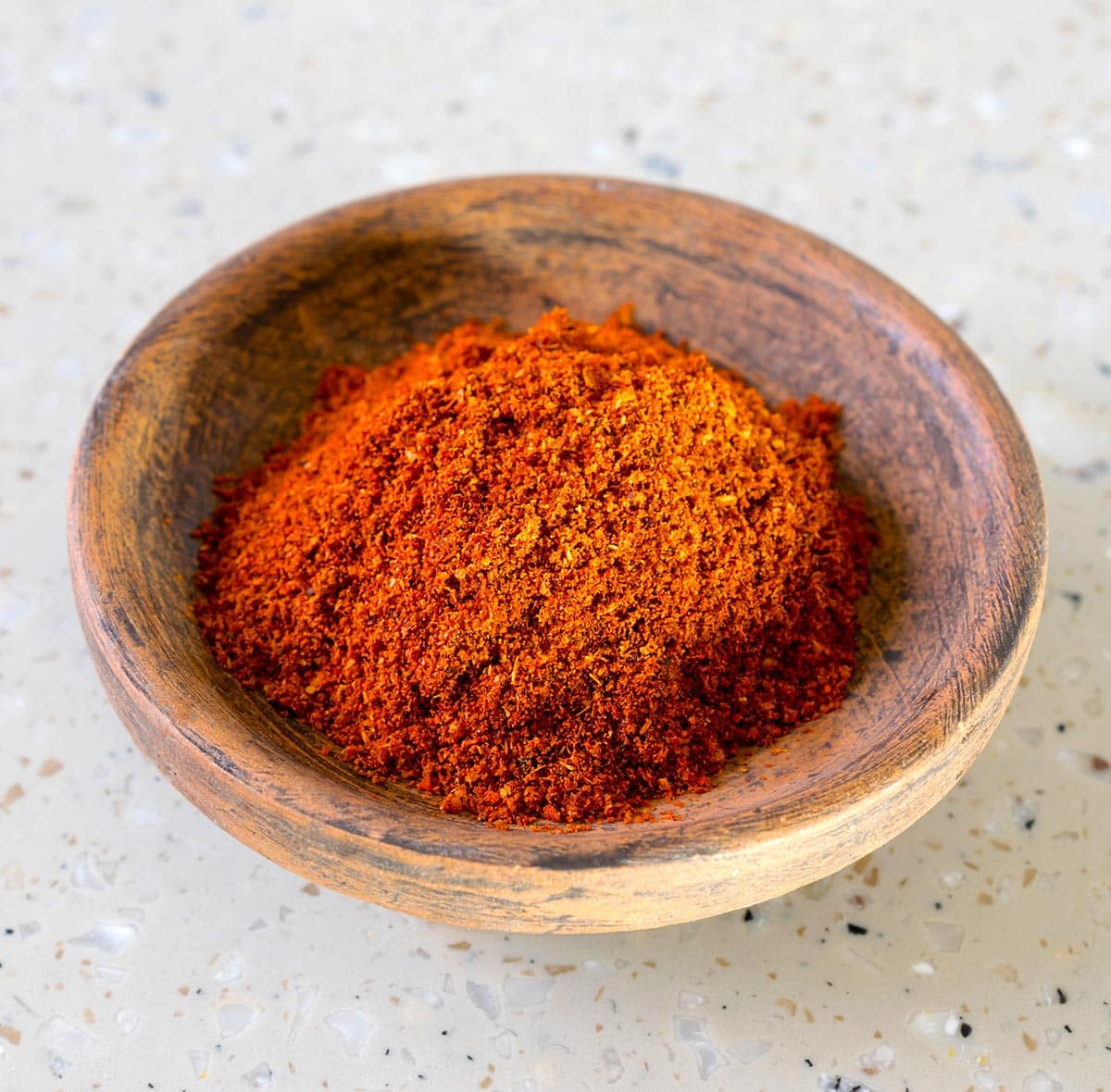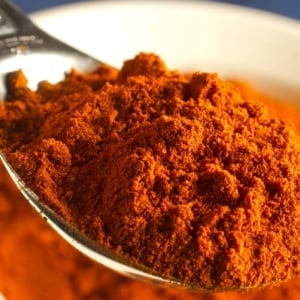Berbere spice mix is essential to Ethiopian cooking, along with the clarified spiced butter known as niter kebbeh. Berbere (ber-BERRY) is to Ethiopia what garam masala is to India.
I learned this berbere recipe while working as a sous chef at The Horn of Africa, an Ethiopian restaurant in Madison, Wisconsin.

Berbere, either as a spice mix or a paste is, more or less, the contents of your spice rack. The paste is mashed with cooked shallots and garlic and a little oil and water. What is an authentic recipe? Um, well, there isn’t just one. Berbere is like masala or a Bolognese sauce — every cook has her own version.
I learned about berbere many years ago, when I worked at The Horn of Africa. Knowing nothing about the cuisine — I was studying African history at the university — working there was an amazing experience that helped set me on the path I am on to this day.
Berbere makes its way into most Ethiopian recipes, notably abish wot, which I make as an Ethiopian venison stew, doro wot, a chicken dish, and my all time favorite, tibs. All are classic dishes from that country.
In fact, doro wot, a spicy chicken stew, is considered the national dish of Ethiopia. For hunters you’re in luck; remember Africa chickens tend to be old and tough — so a pheasant or grouse would be a far better choice than a typical American chicken. If you are not a hunter, try to find a stewing hen, or at least a roasting hen.
Or you could use venison to make a version of segi wat, which is typically done with lamb.
Vegetarians will want to make my butternut squash curry, which is actually an Ethiopian rendition that uses a little berbere.
My boss at the time, an Eritrean woman named Meselesh Ayele, said a bride’s ability to make berbere factored heavily in whether she’d be a good wife. Dunno if that’s still true, but I can tell you she never shared the exact berbere recipe she used at the restaurant. I know the spices, just not the proportions.
Here’s what I came up with:
Ethiopian Berbere Paste
Ingredients
- 1 teaspoon black peppercorns
- 12 whole cloves
- 12 cardamom pods
- 2 large shallots, minced
- 6 cloves garlic, minced
- 3 tablespoons vegetable oil, such as peanut
- 2 tablespoons grated fresh ginger
- 1 tablespoon salt
- 2 tablespoons paprika
- 3 tablespoons cayenne
- 1 teaspoon turmeric
- 1 teaspoon fenugreek
- Water (see below)
Instructions
- Toast all the whole spices in a dry pan over medium heat until they are fragrant. Set them aside.
- In the same pan, heat the oil and sweat the shallots and garlic over medium heat. Do not let them color. Turn off the heat and set aside.
- Grind your whole spices in a spice grinder, then mix them with the powdered spices. In a mortar and pestle, add the shallot-garlic mixture and add the ginger. Pound it well for a minute or two. Start adding the spice mixture, pounding and mixing all the way, until you have a clay-like, brick red mix. You now have berbere in its most preservable form.
- In the fridge, I've kept this for a year with nothing noticeable happening to it. But, this is tough to use. So if you want to use your berbere now, start adding some water, a tablespoon at a time, to thin it out to the consistency you want.
- If you don't want to make berbere the old-fashioned way, you can put the wet ingredients in a food processor, add the spices and then drizzle in water or oil as you buzz it on low. Remember this stuff is ferocious. A little goes a long way.
Nutrition
Nutrition information is automatically calculated, so should only be used as an approximation.
